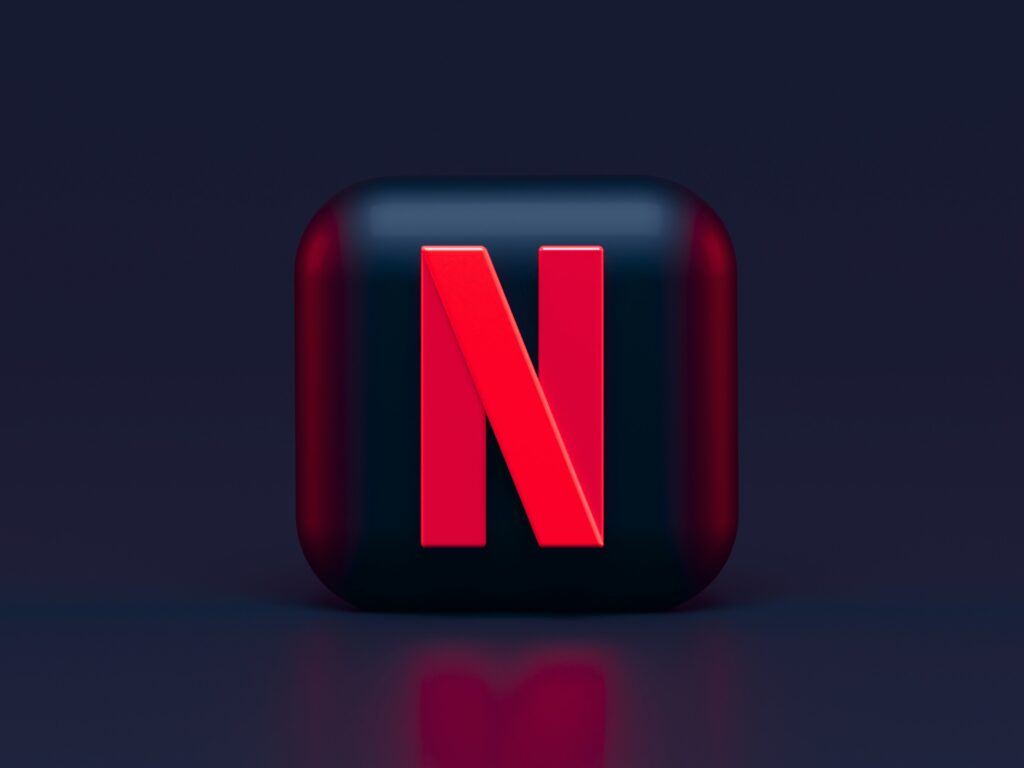The right melody at the right moment can turn an ordinary advertisement into a memorable experience, establishing a deep connection between the brand and consumers’ hearts and minds. As a result of a powerful emotional event, business often observe a significant increase in ad engagement that can boost online sales. So let’s explore how!
The Psychological and Emotional Impact of Music in Advertising
The impact of music is universal and emotionally profound, serving as a crucial tool in advertising. It goes beyond entertainment to tap into deep-seated memories and emotions. Melodies and rhythms can evoke various responses, from joy and excitement to sadness and nostalgia, significantly shaping consumer perception and cultivating a lasting attachment to a brand.
Each musical note, whether heard in a major or minor key, at a fast or slow tempo, can influence mood and recall. For example, major keys often provide a sense of happiness and brightness, universally uplifting listeners’ spirits. In contrast, minor keys convey a sense of melancholy or introspection, ideal for brands that want to evoke more profound, thoughtful connections with their audience. Fast tempos can energise and stimulate, making them perfect for campaigns that motivate consumers, such as sports advertisements or fast-paced product launches. Whereas, you might want to choose a slower tempo that can calm and soothe, perfect for relaxation or wellness products.
The power of music to evoke memories is equally significant in advertising. This phenomenon, rooted in what psychologists refer to as the “peak-end rule”, suggests that people remember most vividly the peak moments of an experience and the emotions felt at its conclusion. A familiar tune can transport a listener back to a first concert, a family holiday, or a significant life event, instantly awakening the emotions experienced at those times. Advertisers leverage this capability by integrating recognisable or nostalgically charged music into their campaigns. As a result, when a consumer hears a piece of music that recalls a positive memory, the positive emotions associated with that memory can be transferred to the brand, enhancing consumer affinity and loyalty.
Furthermore, the strategic use of music in advertisements can anchor the brand in the consumer’s memory. When an ad’s distinctive musical element aligns well with the brand’s identity, it becomes memorable. Over time, this consistent association builds a sonic branding that can instantly trigger recall—much like a classic song’s first few notes can make one think of a memorable ad from years past. This instant recognition is invaluable in today’s fast-paced, highly competitive market environment.
In fact, a study published in the Journal of Business Research in 2017 found that positive background music can enhance consumers’ online shopping experience. The study showed that 77% of participants reported increased enjoyment and 64% reported increased intention to revisit the website when background music was present.
Case Study: Coca-Cola’s “Taste the Feeling” Campaign
Overview
In 2016, Coca-Cola launched the “Taste the Feeling” campaign, a global marketing initiative designed to create an emotional connection with consumers by highlighting the brand’s core values of happiness and togetherness.
Strategic Use of Music
A central element of the “Taste the Feeling” campaign was its custom-composed song, crafted to evoke the brand’s essence. Coca-Cola collaborated with Swedish DJ Avicii and Australian singer Conrad Sewell to create a track that resonated across different demographics. The song, also titled “Taste the Feeling,” featured uplifting and universal lyrics, and was used in various advertisements and promotions, including the UEFA EURO 2016 and the Rio 2016 Olympic Games.
Campaign Components
Audiences worldwide engaged with the ad through various touch points:
- TV and Digital Ads: The campaign included 10 TV commercials and various digital, print, and out-of-home materials. These ads portrayed authentic, relatable moments where people enjoyed Coca-Cola, emphasising the product’s ability to make ordinary experiences special.
- Social Media Integration: Coca-Cola leveraged social media platforms to enhance consumer interaction. The campaign’s song and its visuals were shared extensively, driving a 20% increase in social media engagement.
- Customisable Digital Experience: Coca-Cola created an interactive website where users could customise their own Coke stories, share them on social media, and become part of the brand narrative. This participatory approach fostered a sense of community and personal connection with the brand.
The Impact of Music and Results
The “Taste the Feeling” campaign not only enhanced brand recall. It also demonstrates the tangible impact of music on Coca-Cola’s sales and engagement metrics. During the campaign period, Coca-Cola reported a 20% increase in social media engagement and a 15% increase in online sales. The strategic use of music and storytelling in the campaign was pivotal in achieving these results, reinforcing the brand’s position in the market and as a result increase sales.
Building Brand Identity
Role of Sound Logos
Think of a sound logo as a musical signature for a brand. It’s a catchy little tune or sound that helps you instantly recognise and remember a company. These short but impactful sound bites are designed to stick in your memory and bring up specific thoughts or feelings whenever you hear them.
Consistency in Sound Branding Across Platforms
The consistency of sound branding across various platforms ensures that a brand is easily recognisable, whether on TV, radio, online ads, or at events. For example, Netflix’s simple “ta-dum” sound mark plays at the start of every Netflix original, creating a uniform and instantly recognisable brand experience regardless of the viewer’s device or location.
In an interview, Tanya Kumar, Netflix’s brand design lead, the “ta-dum” sound is crucial for setting the mood and preparing viewers for the content they are about to watch, whether it’s on a TV screen or in a movie theater.

The Impact of Music on Consumer Behaviour
Music’s Role in Purchase Decisions
Music profoundly influences shopping behaviour by affecting mood and engagement levels.
Sephora is a great example of how music can profoundly influence shopping behaviour by creating a unique and engaging store atmosphere. In Sephora stores, playlists are designed to reflect the brand’s modern, upbeat, and inclusive identity. The music chosen often features energetic, contemporary hits that appeal to its diverse clientele. This thoughtful curation helps set a positive mood and energise the shopping environment, encouraging customers to explore the aisles longer, try more products, and, ultimately, make more purchases.
A study published in the Computers in Human Behavior journal in 2017 found that pleasant and congruent background music could increase the user’s shopping satisfaction and intention to purchase. Participants who listened to pleasant and congruent music showed a 15% increase in purchase intent compared to those who shopped without music.
Similarly in the digital realm, we can take a look at the strategic collaboration between Spotify and Nike to showcase the powerful role of music in enhancing user engagement and driving online sales.
Case Study: Leveraging Spotify in the Nike Training Club App

Nike leveraged Spotify’s extensive music library to create custom playlists tailored to their various workout programs. These playlists were integrated directly into the Nike Training Club (NTC) app, allowing users to enjoy a seamless workout experience with music that matched the intensity and mood of their exercises.
Results
The impact of music integrated in this campaign was significant:
- Increased App Engagement: The addition of personalised music playlists led to a 30% increase in app engagement. Music served as a powerful motivator, making workouts more enjoyable and helping users stay focused and energised. Nike reports that workouts on this specific app tripled to nearly 5 million workouts per week.
- Boosted Online Sales: This heightened engagement translated into a 20% increase in online sales of Nike’s workout gear. Users who spent more time on the app were more likely to purchase gear, especially with the convenience of integrated shopping links within the app.
Key Takeaways
- Enhanced User Experience: Music tailored to workout routines kept users engaged and motivated, showing that a personalised and enjoyable experience can significantly boost user interaction.
- Seamless Integration: Providing easy access to music within the fitness app reduced friction and kept users focused on their workouts, thereby increasing app usage.
- Convenience in Shopping: Integrating product links within the app allowed users to easily purchase workout gear, directly contributing to increased sales.
Practical Applications
Tips for Selecting the Right Music for Different Ad Types
To effectively select music that complements your advertising goals and resonates with your target audience, here are some of our essential steps to follow:
- Define the Advertisement’s Objective: Determine what action you want the audience to take after viewing the ad (e.g., purchase, visit a website, share information).
- Understand Your Audience: Research the musical preferences of your target demographic. Consider age, culture, and social trends that influence their music tastes.
- Match the Tone of the Ad: Choose music that reflects the emotional tone and message of the advertisement. For example, use energetic music for ads aiming to excite or motivate and soothing tunes for ads meant to calm or reassure.
- Consider the Ad Format: Different ad formats may require different types of music. For instance, a quick, visually-driven social media ad might do well with a catchy, fast-paced tune. In contrast, a longer, narrative-driven video might benefit from a more developed musical score.
- Test Multiple Options: Experiment with different tracks to see which enhances the ad’s effectiveness the most. Gather feedback through focus groups or A/B testing.
- Finalise the Music Choice: Once you’ve selected a piece of music that aligns with all the above criteria, ensure it seamlessly integrates into the ad, enhancing rather than distracting from the message.
Legal Considerations in Using Music
Navigating the complexities of music licensing is crucial to avoid legal pitfalls. Here’s a lightweight checklist, and head to this way for our complete guide:
- Identify the Music Rights Needed: Determine whether you need rights for the composition, the recording, or both. Remember, a song’s composition and its recording might be owned by different entities.
- Seek Out Copyright Information: Find out who holds the copyright to the music you intend to use. This information can typically be found via performing rights organisations, music licensing companies, or directly from the copyright holders.
- Secure the Appropriate Licenses: Depending on your use, you may need one or more of the following:
- Sync License: This is for using the song with the video.
- Master License: If you’re using a pre-existing recording.
- Public Performance License: If the ad will be broadcast or played publicly.
- What about your unique sound? Have you considered having your own music created? We can help you craft the perfect musical score to complement your vision.
The impact of music on advertising is deep. The perfect melody can turn a mundane ad into an unforgettable moment and forge a strong bond between a brand and its audience. Our exploration has revealed how strategic music and sound design elevate ad engagement and drive online sales, proving that music is more than mere background noise—it’s a potent influencer of consumer behaviour.
In today’s crowded marketplace, strategically integrating music and sound design is essential for brands seeking to differentiate themselves and drive consumer behaviour. Music’s role goes beyond aesthetics—it’s a catalyst for deeper consumer connections and marketing success.

